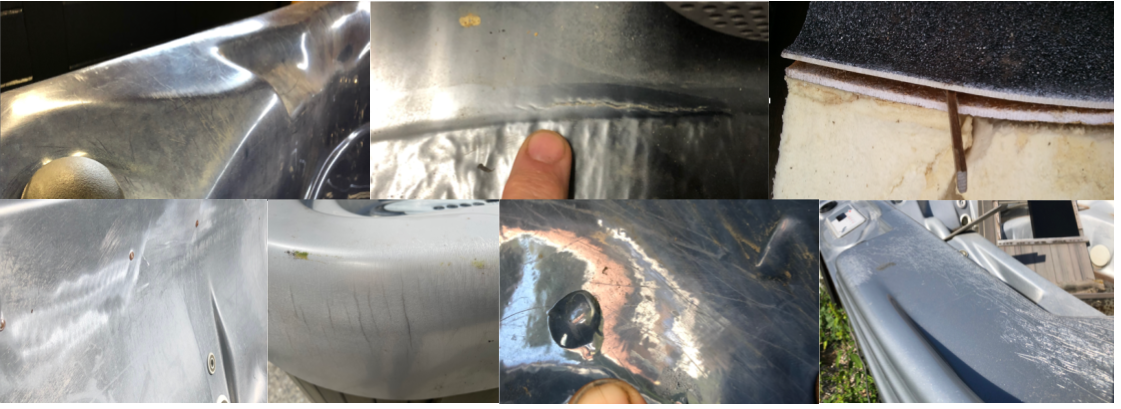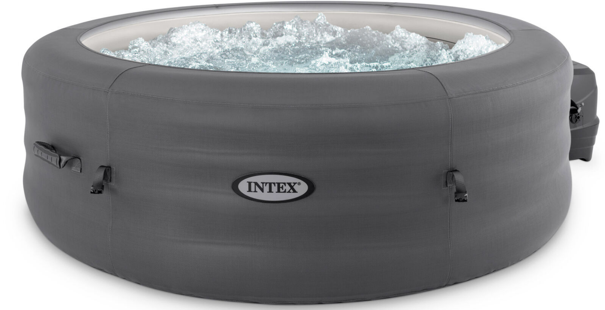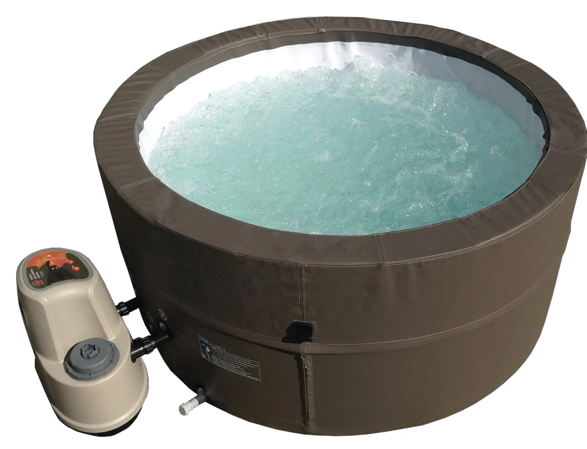Chapters:
Chapter 1 Topics
4-R: The Shell
i. Acrylic/Fiberglass Shells

Worn-out acrylic, underwater cracks, delamination, fading, corner fissuring, blisters and crazing happen more often with lower quality shells.
Standard hot tub shells are made from an acrylic sheet, which is pulled into a vacuum mold to create the shape. Then the thin shell is reinforced with a thicker layer of fiberglass/epoxy to give it structural integrity.
Some fiberglass-enforced shells are more substantial and much stronger than others.
But pay attention to the acrylic part of the shell – the part that’s visible to the eye. There are different quality levels of acrylic sheets. Some have antimicrobial properties and wear better than others. Some are thicker, tougher and denser than the cheaper alternatives.
All acrylic spas look nice and shiny when new, but cheaper acrylics don’t age well. Some are more easily damaged by UV rays, chemicals, and general wear & tear.
And it’s not just the quality of the acrylic that matters – it’s also how precisely and evenly the mold is pulled, how well the acrylic bonds to the fiberglass, how carefully the holes are bored, and how cleanly the sill perimeter is cut.
Poorly designed hot tubs and/or sloppy manufacturing techniques can result in the acrylic being over-stretched in certain areas, especially in the deep seats and floor corners. Sometimes the film is literally paper-thin and delicate. Sometimes the chemical bonding process fails to work perfectly, causing the shell to blister or delaminate as time passes.
ii. Plastic/Polymer Tubs


The one on the left may look nicer, but it likely will fall apart sooner because it’s made of the same cheap material as the one on the right. The one on the right is simpler, and has less plastic parts to go wrong,
Some hot tub shells are just made of plastic, which does the trick if you don’t care about longevity. But plastic tubs tend to warp and sag over time and their life expectancy is considerably shorter than acrylic/fiberglass tubs.
Rotomold hot tubs don’t have a separate shell and cabinet – rather, they are one single piece made of one single material. They are made by filling a hollow mold with powdered polymer resin. The mold begins rotating bi-axially and is transferred into an oven. The mold continues to rotate as the resin melts and coats the walls of the mold. It’s how most plastic single-piece plastic toys are made (note the word “toys”).
They’re cheap to make and inexpensive to buy, but they are easily damaged by UV rays and extreme weather. The material is soft, and easily scraped/gouged. They eventually start to fissure and crack as the oils in the polymer begin to desiccate, causing the shell to shrink and pull. This is why we almost never come across used plastic or rotomold hot tubs in good enough condition to consider salvaging.
In freezing weather, they get brittle and can crack or even shatter if they get hit hard, and they become more fragile as they age.
Some rotomold brands can be fixed by plastic welding, but others use polymers that cannot be welded once the rotomold shell cures. I’ve heard marketers claim that new technology makes them a more viable option, but our experience so far has been that rotomold tubs are a bad choice if you care about durability and longevity.
iii. Foam/Inflatable Basins


We don’t consider these to be real hot tubs, but I’ll comment on them anyways. I tried selling them for a while, but client satisfaction was so low due to so many issues, that it wasn’t worth the headache.
Inflatable spas can take days to warm up if it’s cold outside, and they cool down quickly with the top off. Sometimes they may not be able to reach high temperature at all, due to a lack of insulation. They puncture easily and commonly blow apart at the seams, which is not covered by warranty and can’t be fixed, no matter what the promotional material says.
Foam tubs are a slight step up, but still, they’re basically disposable units. Proprietary sealed equipment means they can’t be opened up to be fixed – they can only be replaced, and ordering new equipment can sometimes cost almost as much as buying a new tub.
These small tubs have no seats, which means everyone has to crunch their knees up to their chin if they don’t want to tangle their legs. The jets don’t offer good massage, and the water gets and stays dirty due to a lack of proper filtration.
Simply put, these aren’t real hot tubs – they’re just bowls of warm water that blow bubbles for visual effect. You might consider saving your money for something else, and just use your bathtub instead.






